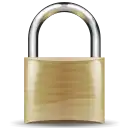UA:Variant Rules
| This material is published under the OGL |
Introduction
Warning: Get Ready to drink from the fire hose.
Unearthed Arcana exposes you to more variant rules and alternative methods of gaming than anyone can hope to use in a single campaign. On top of those, a bunch of House Rule sidebars written by various members of the Wizards of the Coast R&D department describe personal variants they’ve used in their home campaigns. In fact, there’s probably more in here than you could reasonably use in a dozen campaigns, and some of it you probably won’t ever get around to actually introducing to your game.
Take a deep breath—it’s okay.
Just as no player actually casts all the new spells in the latest rulebook, and no DM actually uses all the new creatures in the latest manual of monstrosities, you shouldn’t feel any compulsion to use all these variants, even in a lifetime of gaming.
Instead, pick and choose the ones that feel right for your style of gaming, your players, and your campaign. Some groups may latch on to a specific variant—whether the taint rules, Sanity checks, spell points, or legendary weapons—in a heartbeat, making it a central feature of their game world. Others find a few smaller changes to incorporate, such as a variant class or class feature, reputation checks, or alternative massive damage thresholds. Use the checklist at the back of the book to track what you’re using, and what changes you make to the variants you use.
The “trick” behind getting your money’s worth from this book is an attitude of curiosity and experimentation. Some groups may have a conservative outlook: “We like the way our game works and don’t want to wreck it.” It’s okay to think that way—but nothing in this book can wreck your game unless you let it. If you try out a variant and it doesn’t work for you after a session or three, go back to the way you were playing, or just start over from where you were before you tried out the new rules. No harm, no foul.
The adventurous groups, though—the ones willing to learn new ways to play their familiar game—stand to reap the biggest rewards from Unearthed Arcana. In a way, this book perfectly represents the game itself: Adventurous characters get rewarded, though it takes work to reap those rewards.
When you turn to the next page, the inundation begins. Just remember to take small sips at first—try out a small number of variants for starters, gradually increasing the level of change until you reach your comfort level. Don’t worry that you’re not using all the new stuff at once. After all, there’s always another campaign waiting to be born, and maybe in that one you finally try out the new metamagic components, or the spelltouched feats, or . . .
What’s Inside?
It’s usually true that you don’t need to read a D&D rulebook from front to back to get the most out of it—and that’s never been more true than in the case of Unearthed Arcana. Using the table of contents as a guide, you can simply flip to a part of the book that looks interesting and start reading. That said, here’s a summary of what each chapter contains.
Races introduces the concept of racial variants, keyed either to a particular environment or a certain elemental type. It offers a way to reduce a character’s level adjustment, which can pay off in more rapid advancement at higher levels. Much of the chapter is devoted to bloodlines—a way to make characters distinctive by giving them a hint of monstrous ancestry. Finally, it presents paragon classes that enable characters to develop into quintessential examples of their race.
Classes is full of ways to tailor the standard d20 System character classes. It provides a system allowing divine spellcasters to cast their spells spontaneously, as well as some variant class features. You can replace the standard bard, paladin, and ranger classes with prestige versions of those classes, or you can create gestalt characters who gain levels in two classes at the same time. For a simpler approach to class selection, try out the generic classes at the end of this chapter.
Building Characters offers options for detailing a character—a new way of determining which skills a character knows, a system for complex skill checks, and selections of traits and flaws that make characters more distinctive. Spelltouched feats and weapon group feats add even more variety to what characters can do. Instead of using the standard rules for the Craft skill, you can give characters craft points that they spend to create alchemical substances and magic items. The largest section of this chapter deals with character background, a way to create a character of higher than 1st level who has a unique personal history.
Adventuring is a treasure trove of ideas for changing basic aspects of the way the game works. If you want to try out a new system for how Armor Class is determined, or the benefit that armor provides, or how characters are affected by damage, you’ll find options here. you can give characters action points, which they se to improve their chances of succeeding at a task. You can change the way combat works by keeping track of a creature’s facing, or by using a hexagonal grid rather than a square grid. You can even modify the most fundamental concept in the d20 System rules by getting rid of the d20 altogether!
Magic is in many ways a counterpart to Adventuring, except that the variants here are all related to the effects of magic on the game. You can give each character and creature a magic rating, which determines its caster level. You can generate individualized lists of summon spells related to each caster’s world view or goals. Metamagic components allow spellcasters to use spells with the effect of a metamagic feat already built in. The spontaneous metamagic variant gives casters the opportunity to assign metamagic effects to a spell just as it is cast. The spell point system gives casters more flexibility in their daily spell choices. Rather than limiting casters to a certain number of spells per day, you can use the recharge magic system to determine how often a character can cast a particular spell or a spell of a certain level. You can change the role of magic in the game without altering any other rules by using the material on legendary weapons, item familiars, and incantations.
Campaigns takes a look at concepts that can flesh out characters and affect (for good or ill) the way they interact with their world. Contacts are NPCs who can provide various forms of aid to player characters. Reputation and honor help to determine how the other residents of the campaign world perceive the PCs. For a darker and grittier campaign world, one in which characters are up against perils they can’t control, you can incorporate the rules for taint or insanity (or both). Finally, for a different way of determining how characters fulfill the requirements for feats and prestige classes, check out the variant test-based prerequisites.
When Worlds Collide offers some brief advice for DMs on how to use a wide variety of variant rules during play without necessarily creating different campaign worlds for different combinations of variants.
Back to Main Page → 3.5e Open Game Content

